Monongalia County Courthouse
Introduction
Text-to-speech Audio
Images
The 1848-1890 "Old Courthouse," ca. 1851-1890. Note the statue of Patrick Henry on the rotunda
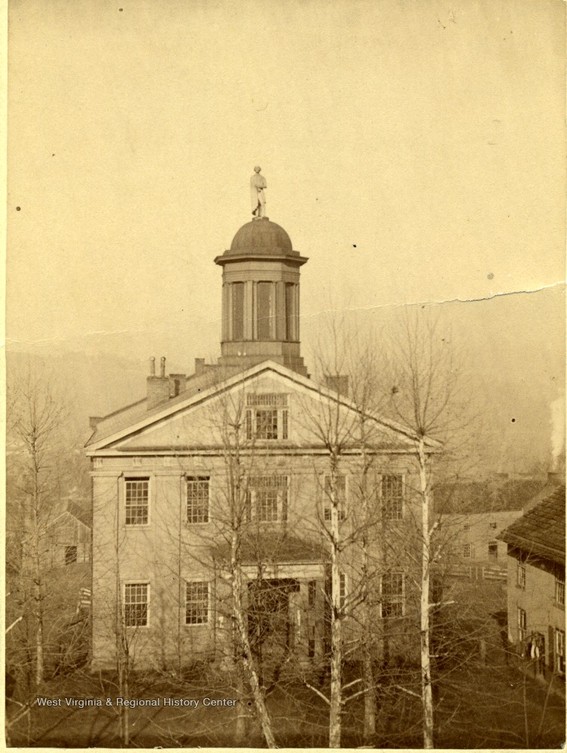
The Monongalia County Courthouse, ca. 1900-1910
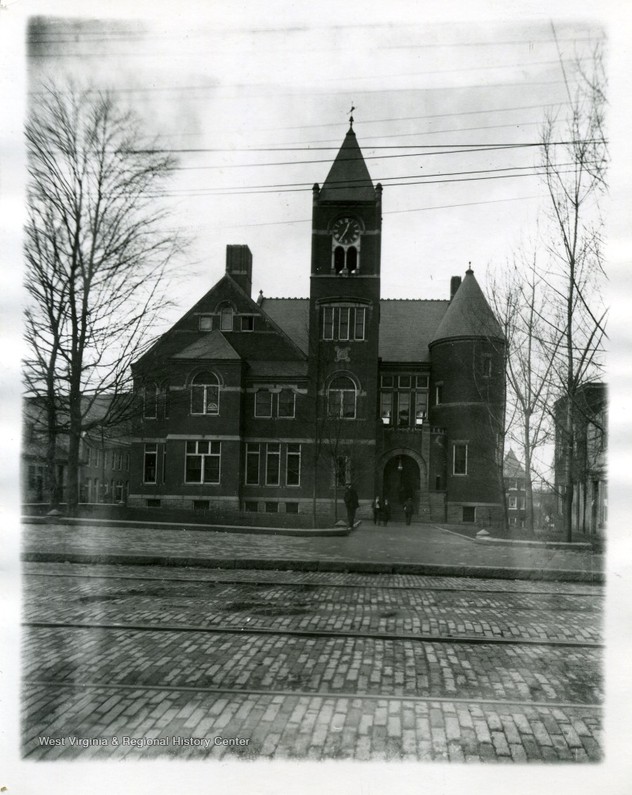
Creative arts exhibit in the courthouse plaza, 1966
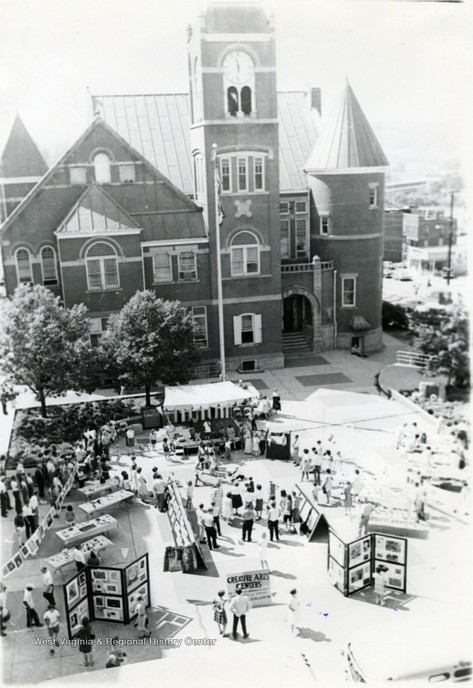
Current facade of the building
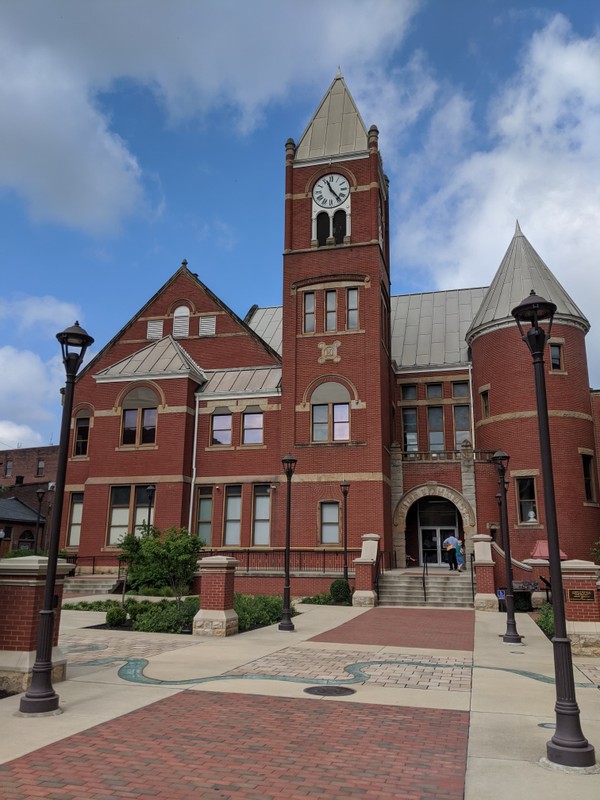
Restored fountain in the plaza
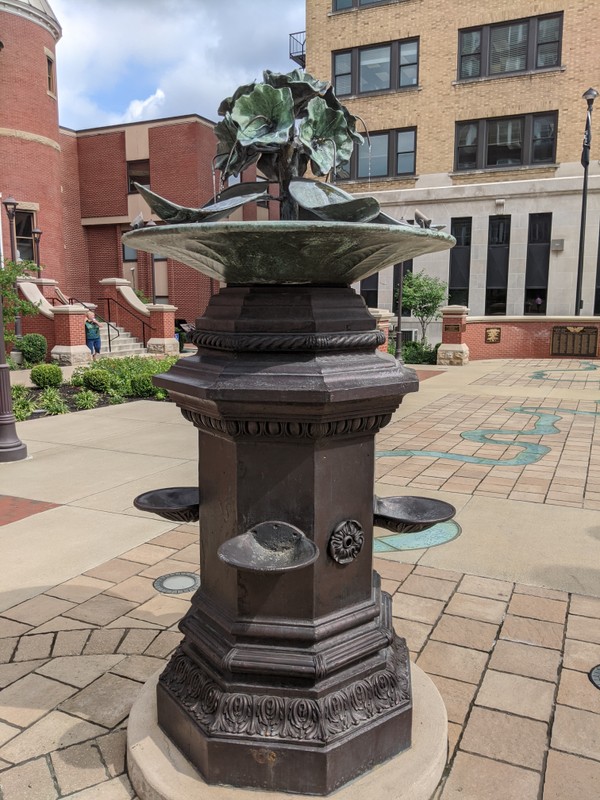
The statue of Patrick Henry in its present location
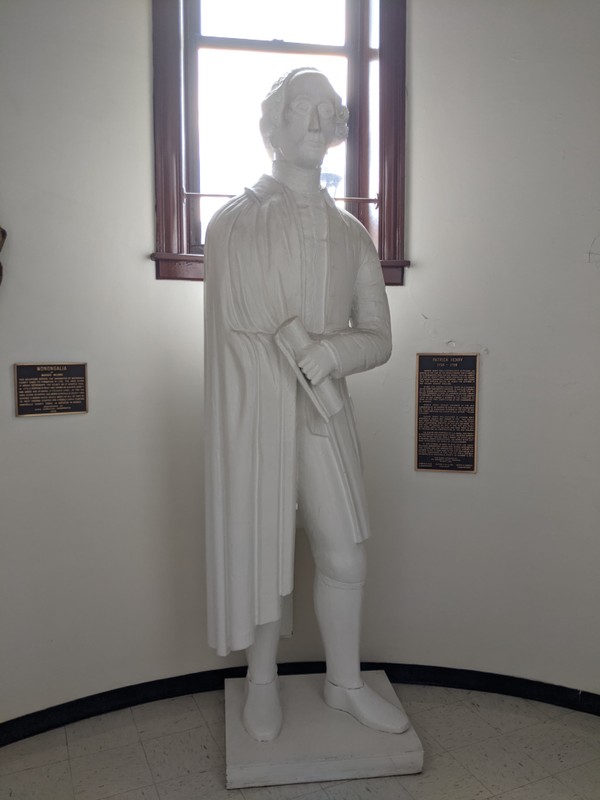
Scale replica of the Monongahela River leading to the veterans memorials
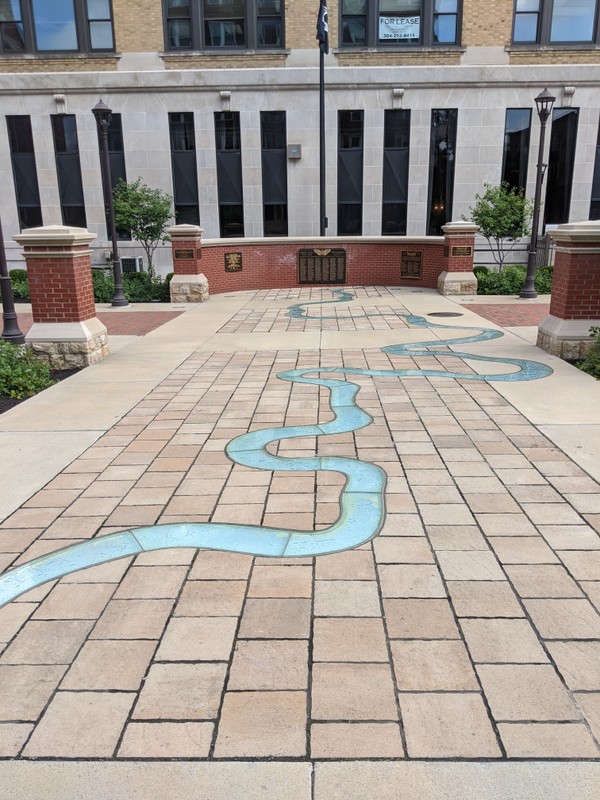
Backstory and Context
Text-to-speech Audio
The presence of a courthouse at this location predates even the existence of Morgantown itself. In 1776, the Virginian District of West Augusta was split into three counties; Ohio, Yohogania, and Monongalia. At the future site of Morgantown, a simple wooden frame courthouse was erected to serve Monongalia County in 1784. This attracted businesses and residents eager to take advantage of close proximity to the court. In turn, the influx of residents spurred the establishment of the city of Morgantown in 1785. A brick courthouse replaced the original wood structure in 1804. Another new brick building replaced the prior structure in 1848. This courthouse was built in a Greek revival style to imitate a classical temple. It was two storied and capped by a box gabled roof and decorative rotunda. In 1851, a statue of Patrick Henry was added to the top of the rotunda. Henry was the first governor of Virginia and is famous for his statement “give me liberty, or give me death!”
By 1884, the county courthouse was in a state of severe disrepair and was declared dangerous. The Monongalia County Court hired Pittsburgh architect James P. Bailey to draft plans for a new building, but local residents heavily opposed building a new courthouse, opting instead to repair the old one and striking down bonds for a new building. In 1890, the issue of the building came to a head. On September 13th, county officials removed vital records under cover of darkness and ordered demolition to begin. When incensed residents awoke and realized what had happened, they sought an injunction to prevent the demolition. Unfortunately for them, the court officials had all fled town and local lawyers refused to take the case. Demolition concluded in early 1891 and the court operated from a Methodist Protestant church on Walnut Street.
The Monongalia County Courthouse which still stands today was built in 1891 by the George L. W. Mayers contracting firm. The Victorian Romanesque brick structure cost $53,478 – approximately $1.5 million adjusted for inflation. The eclectic mix of styles and elements found in the Monongalia County Courthouse was typical of United States civic buildings in the late nineteenth century. The flat-planed red brick exterior with cut stone windows are especially emblematic of the Victorian Romanesque style. The building itself is two stories with three-story tower and a five-story clock tower. The statue of Patrick Henry that graced the roof of a prior courthouse now resides on the ground floor of the smaller tour. Though the inside has been remodeled several times and a 1975 addition was added, the façade of the courthouse has changed extremely little since its construction in 1891.
One major change to the Monongalia County Courthouse has been the evolution of the plaza. Until 1818, this space hosted the public whipping post, stocks, and pillories. After this it served primarily as a meeting place and market site. In the twentieth century, several war memorials and a drinking fountain were erected in the courtyard. A major project to completely redesign the plaza began in 2016. The primary concern was improving safety and appearance. A local architectural firm, Mills Group, was contracted to complete the renovations for about $2 million. The veterans memorials were restored and an LED-lit glass scale replica of the Monongahela river was added to the pavement. Initially, the drinking fountain that once graced the plaza was missing. Extensive efforts were made to recreate it based on a few poor-quality pictures, though this enterprise failed. However, a landscape designer for the project noticed the exact fountain tucked away in Westover Park while he went for a run one day. The cities of Morgantown and Westover collaborated, and the fountain was restored and added to the courtyard.
The Monongalia County Courthouse is significant architecturally, historically, and culturally. It is an excellent representative of the Victorian Romanesque style of architecture. It is historically central to the political history of northern West Virginia and Morgantown. It has also been a crucial cultural aspect of Morgantown by providing a meeting place and social space. The renovations made in 2016 breathe new life to the courthouse space while maintaining the authenticity and tradition associated with the building.
Sources
Gooden, Randall S. Monongalia County Courthouse, National Register of Historic Places. January 17th 1985. Accessed August 24th 2020. http://www.wvculture.org/shpo/nr/pdf/monongalia/85001525.pdf.
Historic Monongalia County Courthouse, Main Street Morgantown. Accessed August 24th 2020. https://mainstreetmorgantown.wordpress.com/historic-monongalia-county-courthouse/.
McClain, Paula. A River Runs Through It, Morgantown Magazine. August 20th 2018. Accessed August 24th 2020. https://morgantownmag.com/a-river-runs-through-it/.
Monongalia County Courthouse Plaza, Mills Group. Accessed August 24th 2020. https://millsgrouponline.com/projects/monongalia-county-courthouse-plaza.
Snyder, Christine. A Run of Good Luck, Morgantown Magazine. July 31st 2017. Accessed August 24th 2020. https://morgantownmag.com/a-run-of-good-luck/.
West Virginia & Regional History Center
West Virginia & Regional History Center
West Virginia & Regional History Center
